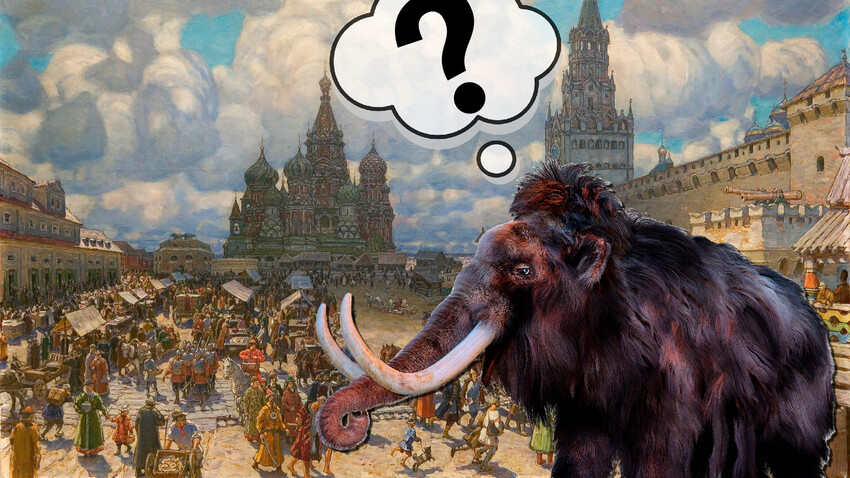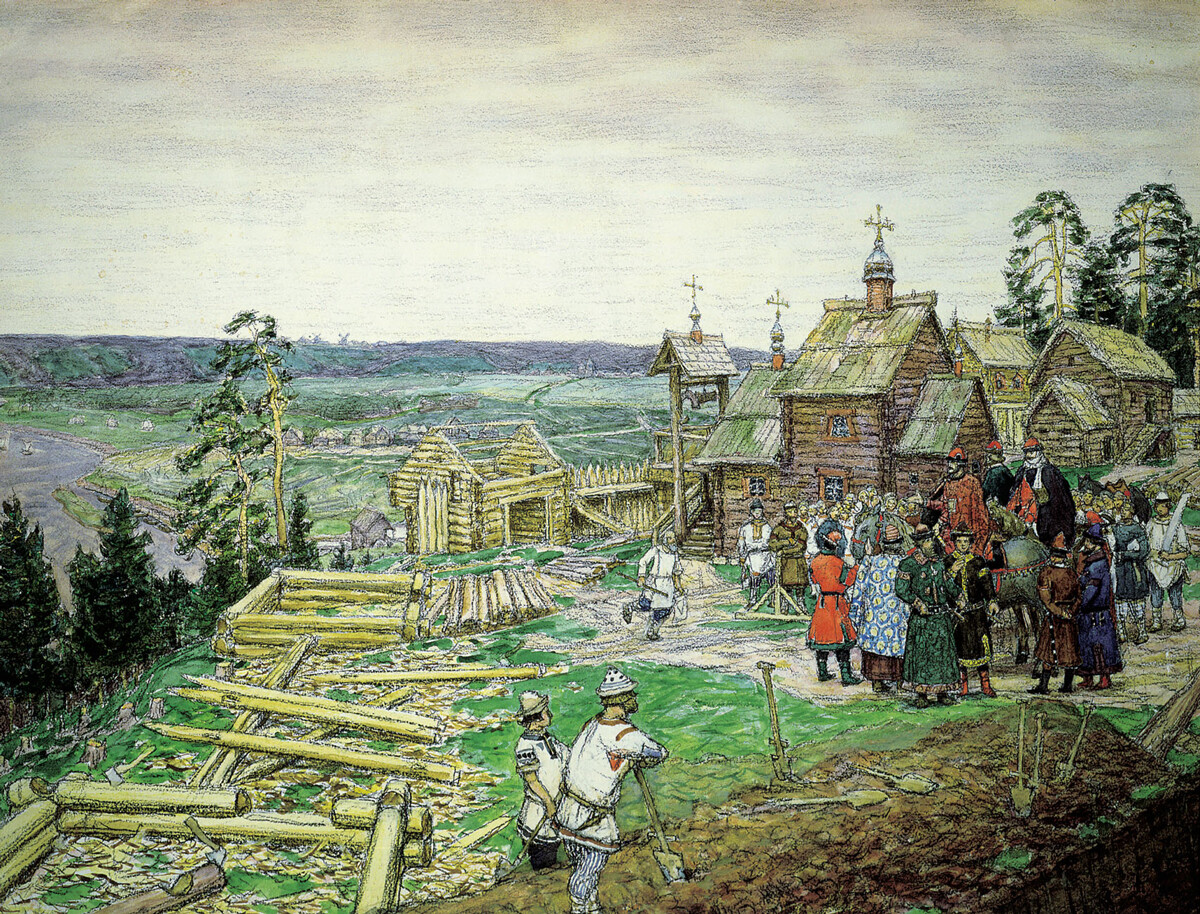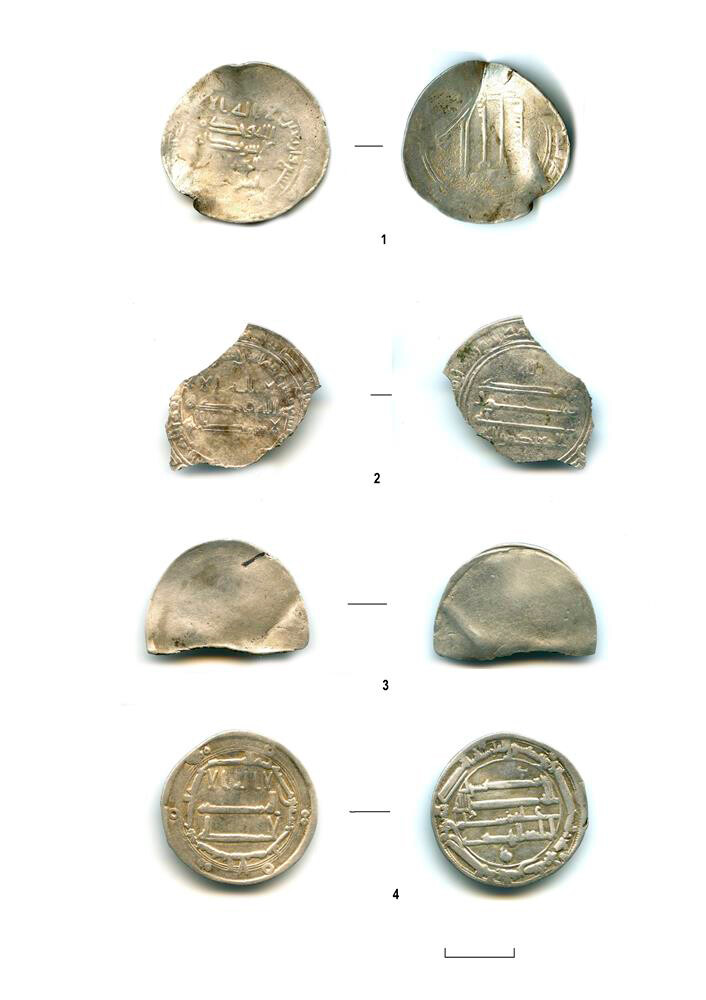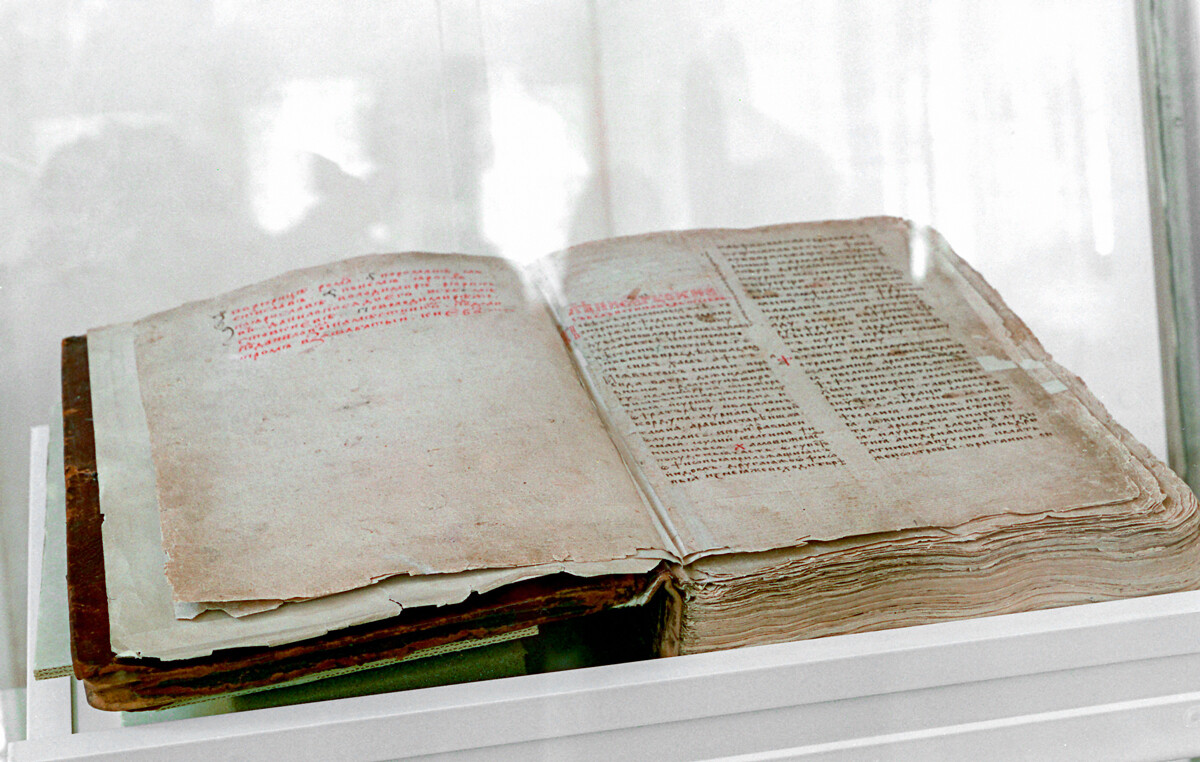
“Come to me, brother, to Moscow.” This is the first discovered mention of Moscow in the Russian chronicles.
Thus, according to the Hypatian Codex, the prince of Rostov and Suzdal Yuri Dolgoruky invited the prince of Novgorod-Seversk (a city in contemporary Ukraine) Svyatoslav Olegovich for a meeting at a place called Moscow. They met on April 4, 1147, and concluded a temporary truce in the princely war. The next day after Svyatoslav’s arrival, Yuriy arranged a great feast (“a mighty dinner”, as the chronicle puts it bluntly) and, a day later, the princes exchanged gifts and parted.
This does not mean that Moscow was founded in 1147 and Dolgoruky who did it. This is only the oldest written mention of the toponym ‘Moscow’ that has been discovered to date.

"Yuri Dolgoruky ordering a new fortress to be built in Moscow," by Apollinariy Vasnetsov
Public DomainHypatian Codex (‘Ipatiev Letopis’ in Russian) is a manuscript book of 307 large sheets, which was kept in the Ipatiev Monastery in Kostroma. The Chronicle was copied by at least five different scribes from several other chronicles around the 1420s. Events of 1147 are rewritten from the ‘Kiev Chronicle’, which was written in the 12th century; its original has never been found.
If the chronicler mentioned Moscow without explanation, it means that people of the twelfth century already knew very well what Moscow was. This is confirmed by two other mentions:
1) The birch bark manuscript #723, Novgorod, not earlier than the 1160s. The author of this note Dushila writes: “I’m going to Kuchkov.”
2) Hypatian Codex, 1176, explains that Kuchkov and Moscow are one and the same place: “Moscow, also known as Kuchkovo.”

Birch bark manuscript #723 that mentions 'Kuchkov' (Moscow)
Novgorod State Museum ReserveKuchkovo was one of the villages in the center of Moscow. Alexander Wexler, the first Chief archaeologist of Moscow, who directly supervised excavations in the city center in the 1990s and 2000s, writes that ‘Kuchkovo Field’ was the name of the Sretenka Street area. Wexler and other archaeologists discovered finds confirming the older age of the city.

Alexander Wexler (L) examines an archaeological finding during excavations at Manezhnaya square, Moscow.
Oleg Lastochkin/SputnikIn the late 1990s, Wexler delivered charcoal samples from soil near the Moscow Kremlin for a radiocarbon study. It turned out that the earliest charcoal samples dated back to 890 AD. It means that, even then, there was a construction near the present Kremlin – houses with arable land and vegetable gardens.
Hoards of coins of the 9th century were also found on the territory of the Kremlin, which show that the settlement had trade relations with distant countries; for example, with Armenia or with the ancient city of Merv. Among the finds on Manezhnaya Square is a Byzantine amphora from the 12th century. All of this, according to Wexler, “emphasizes the importance of this early settlement”. As he said in an interview, “I believe that, in 1147, there was already an established settlement on the territory of the capital, with numerous Slavic villages around.”

Arabian coins of 8th-9th centuries found in Moscow
The Archaeology Institute of the Russian Academy of SciencesThere are also the remains of much older settlements on the territory of modern Moscow. Some sites of Dyakovo culture (7th – 5th centuries B.C.) were discovered near the village of Kolomenskoye. And the sites of the Neolithic period (up to 4,000 years ago) were also found in the north-west: in Khimki, Serebryanny Bor, Strogino and Shchukino.

Hypatian Codex, the oldest surviving copy
Yuri Kaver/SputnikThe leading Soviet urban scientist, Dr. Georgy Lappo wrote: “In the vast majority of cases, settlements that became cities did not contemplate an urban ‘career’. Therefore, the emergence of a settlement cannot be considered the birth of a city.” Ancient settlements were also present on the territory of St. Petersburg, which does not change the year of its foundation – 1703. However, St. Petersburg had a founder. In the case of Moscow, no specific date of the “laying” of the city foundations has been preserved.
READ MORE:Debunking 5 myths about how St. Petersburg was built
The appearance of the first fortress cannot be considered the birth of the city either – not all fortresses became cities. Archeologists are sure that the fortress, which certainly existed in the Kremlin in 1156, was not Moscow’s first fortress. And, yet, if an older fortification did exist, its remains still need to be found and dated.
Current Chief archaeologist of Moscow is Leonid Kondrashev, Alexander Wexler’s younger colleague, who was also present at the excavations in the 1990s. He confirms: “On the territory of the capital, numerous objects of the 11th century, Slavic settlements of the 10th century were found.” However, Kondrashev reminds that “there is a well-established tradition according to which the age of the city is determined by the first chronicle mentioning”. Thus, to increase the age of Moscow, more serious archaeological findings and the consensus of the scientific community are necessary.
Dear readers,
Our website and social media accounts are under threat of being restricted or banned, due to the current circumstances. So, to keep up with our latest content, simply do the following:
If using any of Russia Beyond's content, partly or in full, always provide an active hyperlink to the original material.
Subscribe
to our newsletter!
Get the week's best stories straight to your inbox